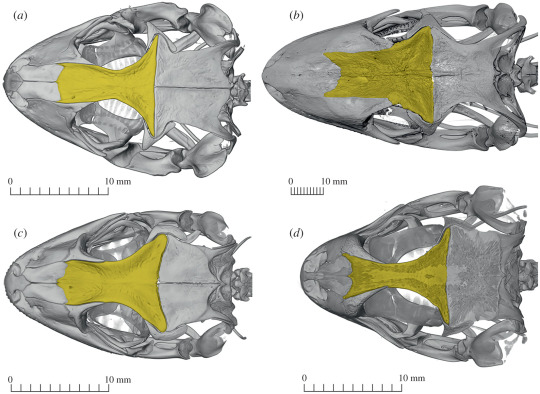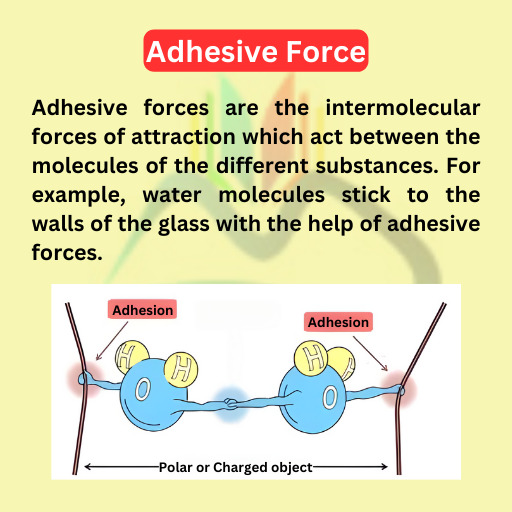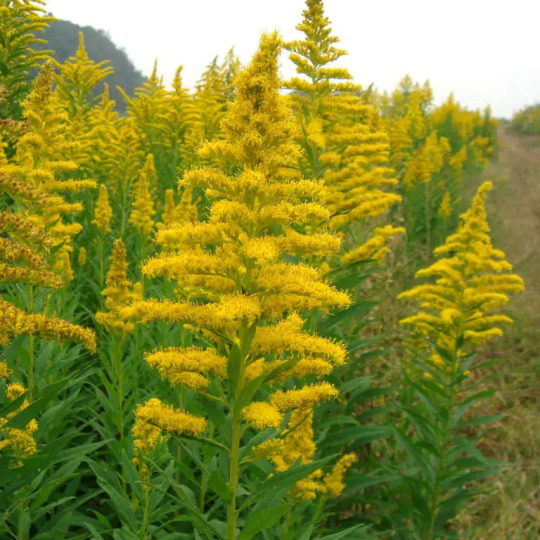#sciencenews
Link
Large-scale gene expression data is used by Geneformer and scGPT models to build fundamental single-cell biology models. These models implicitly learn gene and cellular activities from millions of cell expression profiles, necessitating labor-intensive training and considerable data curation. Here, researchers from Stanford University use gene embeddings from the literature leveraging ChatGPT to investigate a much easier solution. In order to create gene embeddings, GenePT uses the GPT-3.5 and the NCBI text descriptions of specific genes.
GenePT is an effective technique for creating single-cell embeddings by averaging gene embeddings according to the expression level of each gene. It performs on par with or better than Geneformer and other models, and it is user-friendly and efficient. GenePT generates sentence embeddings for every cell by sorting gene names according to expression level. It shows that a straightforward and efficient route for biological foundation models is the large language model embedding of literature.
The foundation models Geneformer and scGPT are made to learn gene and cell embeddings for further investigations. Using a deep learning architecture, these models link input genes and cells to a high-dimensional embedding vector and collect large datasets of single-cell gene expression for pretraining. A small amount of task-specific data can be used to refine the model and improve its predictive power for downstream tasks.
Continue Reading
26 notes
·
View notes
Text
Anything is possible in the Quantum field Using Affirmations can help you get in flow with it.
Love and Light Manifestisnow.
#quantumfield#quantumfieldtheory#quantum#spaceexploration#quantumcomputing#scientists#insights#sciencenews#learning#manifest#manifesting#manifestation#affirmations#abundance#law of attraction#law of assumption#youtube#subconscious#gratitude
8 notes
·
View notes
Photo





Europe's Oldest Gecko Species Lived in Belgium
Paleontologists have described a new extinct gecko species from Belgium. The lizard Dollogekko dormaalensis lived 56 million years ago, making it the oldest gecko species in Europe. 'This discovery provides new evidence for the early history of geckos in Europe,' says Annelise Folie, paleontologist at the Royal Belgian Institute of Natural Sciences (RBINS). The scientists named the new species after the famous Belgian paleontologist Louis Dollo.
Living geckos are found worldwide in tropical and subtropical regions. Most species are adapted to warm climates, so in Europe you will only find them around the Mediterranean Sea. But during the Eocene epoch, 56 to 34 million years ago, it was much warmer in our regions and a lot of thermophilic animals, including geckos, could be found in more northern latitudes than today.
An international team of paleontologists examined a fossil of such a prehistoric gecko from the collections of the RBINS. The fossil was found in Dormaal, a borough of the Belgian town of Zoutleeuw in Flemish Brabant. As it turns out, the fossil belongs to a hitherto unknown species, and represents the oldest remains of geckos known in Europe, together with indeterminate material from Portugal. The new species, Dollogekko dormaalensis, is therefore the earliest living gecko species from Europe described so far.
The only part of this individual that the scientists found was the fossilized frontal bone. However, due to its unique shape and external surface sculpture, it provided enough information to conclude that it was a previously unknown species. This forehead bone therefore immediately became the official type specimen - the (part of the) individual used to describe the species - and will continue to be preserved in the collections of the RBINS.
Greenhouse world
Dollogekko dormaalensis lived during a period known as the Paleocene-Eocene Thermal Maximum (56 million years ago), when Belgium, which today has a temperate marine climate, was much warmer. The new gecko was part of a diverse reptilian fauna of the so-called "Greenhouse World" of this period.
Tropical and subtropical conditions then extended much farther to the poles. In addition, the rise in temperatures during the early Eocene led to a rise in sea level, and many areas of Eurasia were flooded. Europe was an archipelago consisting of several islands. "Given future global climate change and predicted sea-level rise, it is of great importance to understand the distribution of thermophilic, tropical species of the past, as well as the distributions of certain infectious diseases such as malaria," says Andrej Čerňanský, lead author of the study.
What's in a name
When scientists describe a new species, they naturally give it a name. In this case, it was not only a new species epithet (the second part of the scientific name), but also a new genus name (the first part). The species could not be classified in an existing genus because it does not resemble nor lived in the same area than any other gecko species from that period.
The scientists found their inspiration for the species epithet at the location of the discovery of the type specimen: dormaalensis means ‘from Dormaal’. The genus name, Dollogekko, is a tribute to the famous Belgian paleontologist Louis Dollo (1857-1931), best known for his research on dinosaurs, including the Iguanodons, housed at the RBINS. His specialty was the anatomy of extinct fishes and reptiles, including turtles, mosasaurs, snakes, lizards, and dinosaurs.
The study was published in the journal Royal Society Open Science.
This project is a collaboration between researchers from multiple institutions, including the Comenius University in Bratislava, Slovakia (Andrej Čerňanský), Royal Belgian Institute of Natural Sciences (Annelise Folie, Thierry Smith, and Richard Smith), Sam Houston State (Juan Diego Daza) and Villanova University (Aaron M. Bauer) in the United States.
Images 1, 2 and 3 © 2022 The Authors. Published by the Royal Society under the terms of the Creative Commons Attribution License. Images 4 and 5 © Annelise Folie, RBINS
157 notes
·
View notes
Text
Excessive skin care causes premature aging of the skin

#hazbin hotel#sciencenews#Sunakered#GlobeSoccer#carnitrix#skincare#Skirk#skintific#Skin#Globo#Hanuman#Love_wins#attention#BeautifulTXTinParis
2 notes
·
View notes
Text
The same catastrophe that happened on Mars now threatens the Earth.
📊 #Mars, a lifeless and dead #planet, has never had marsquakes caused by underground activity recorded before.
📈 However, #NASA detected marsquakes at the end of 2019, and their frequency has been rapidly increasing since then. Over 1,300 #marsquakes have been recorded to date, and their numbers are still growing. The most powerful #marsquake, with a magnitude of 5, occurred in May 2022.
🔥 According to NASA's research, these marsquakes are happening because #magma is rising from the #Martian depths due to external #cosmic influence that heats up the magma and causes it to ascend.
☄️ This same #energy from #CosmicInfluence once killed Mars, and it can also kill a planet when there is an excess of it. This #catastrophe occurred not 3.5 billion years ago, but just 24,000 years ago.
Watch the documentary #film "The Mystery of Mars' Death | Documentary."
🟢 rumble.com/v3lspf5-the-my…
Watch the uncensored forum on the #rumble platform.
🔴 creativesociety.com/global-crisis-…
🟢 rumble.com/v3z27ij-global…
🔵 twitter.com/i/broadcasts/1…
#GlobalCrisis #Responsibility #December2 #Forum #winter #December2023 #tuesdayvibe #TuesdayFeeling #tuesdaymotivations #TuesdaydayMotivation @USGS_Quakes
#USGS_Quakes#CreativeSociety#GlobalCrisis#Responsibility#Forum#December2023#climate#ClimateCrisis#science#sciencenews
2 notes
·
View notes
Text
IT IS SCIENTIFICALLY POSSIBLE TO DIE FROM DRINKING TOO MUCH WATER
IT'S IMPORTANT TO STAY HYDRATED TO KEEP OUR BODIES FUNCTIONING WELL. HOWEVER, TOO MUCH WATER CAN ALSO BE FATAL. WHEN A DEHYDRATED PERSON DRINKS TOO MUCH WATER WITHOUT THE ACCOMPANYING ELECTROLYTES, THEY CAN DIE FROM WATER INTOXICATION AND HYPONATREMIA.
#science#sciencenature#sciencenews#scientists#scientific#tumblrposts#tumblrdaily#factoftheday#knowledge#information#laboratory experiments#medical experiments#water#learnsomethingnew#facts#informatology
14 notes
·
View notes
Text
read Full article click
#News#YouTubeShorts#BreakingNews#WorldNews#Politics#SportsNews#EntertainmentNews#BusinessNews#TechnologyNews#WeatherUpdates#HealthNews#ScienceNews#ElectionCoverage#LiveUpdates#HeadlineNews#DailyNews#CurrentEvents#Ry
2 notes
·
View notes
Photo

The Nanotechnology World Magazine's first issue will be out soon!
To get your copy, register here: https://www.nanotechnologyworld.org/magazine
#nanotechnology#materialsscience#semiconductors#microscopy#electronics#engineering#scienceandtechnology#sciencenews#technologynews
6 notes
·
View notes
Text

Adhesive Force
.
INDIA's FIRST E- MAGAZINE WITH LIVE TESTING
.
LINK IN BIO... .
#sciencenews#jeemain2024#Pushpa2FirstSingle#Ghaziabad#SupremeCourtOfIndia#StocksToBuy#Besharm_Rohini#Iran#Israel#efastforward#jee#neetpreparation
0 notes
Text
‘Power’ Play: Betavolt Unveils World's First Miniature Nuclear Battery
‘Power’ Play: Betavolt Unveils World's First Miniature Nuclear Battery
@neosciencehub
#neosciencehub #science #NSH #betavolt #BV100 #bbrightvc #futuretechnology #atomicenergy #NuclearBattery #EnergyInnovation #StartUp #innovation #environment #medical
In an innovative leap, Chinese startup Betavolt has introduced a pioneering nuclear battery, approximately the size of a coin, capable of delivering uninterrupted electricity for an astounding 50 years without requiring recharging. As Betavolt transitions from development to the pilot phase, the Beijing-based firm is setting the stage for mass production and a formidable market debut.
Betavolt…

View On WordPress
0 notes
Text
Deadly Genetic Payloads Unstoppable Reproduction
Join our Telegram channel to watch the full video: https://t.me/lifentco
#GeneticThreat#DeadlyPayloads#UnstoppableReproduction#HealthAwareness#ScienceNews#StayInformed#Lifentco
0 notes
Link
Most SARS-CoV-2 patients experience anosmia, or a loss of smell, which can linger for months after recovery. According to olfactory epithelium samples taken from 24 biopsies, T cell-mediated inflammation continues in the olfactory epithelium even after SARS-CoV-2 has been removed from the tissue, indicating a mechanism for long-term post-COVID-19 smell loss.
The severe acute respiratory syndrome coronavirus 2 is thought to harm the olfactory epithelium, a specialized tissue involved in smell sense that runs along the top of the nasal cavity (SARS-CoV-2). The olfactory epithelium comprises three key components: odor-detecting olfactory receptor cells, a sustentacular cell layer for support, and basal stem cells that replenish the cells continually.
Continue Reading
78 notes
·
View notes
Text
0 notes
Text
Family Drama Beneath Our Feet: Genetic Tug of War in Soil
In the ever-evolving saga of nature's mysteries, scientists have uncovered a captivating twist in the age-old tale of plants and their soil companions. A recent research by Clark, K. M. et. al., has delved deep into the intricate relationship between these two entities, shining a spotlight on the role of genetic relatedness in shaping their dynamic dance.
With Solidago altissima (North American species of Goldenrod) as their muse, researchers embarked on an enthralling journey to unravel the secrets hidden beneath the earth's surface. Seedlings from a diverse array of parent plants were carefully nurtured, their destinies intertwined with the soil they grew in. Would kinship prove to be a blessing or a curse?


The results of this groundbreaking experiment were nothing short of astonishing. Seedlings nestled in soil from their genetic relatives found themselves in a struggle for survival, their growth stunted by the very earth that bore their lineage. Meanwhile, those planted in soil from unrelated sources flourished, basking in the nurturing embrace of unfamiliar terrain.
In a revelation that echoes the complexities of human relationships, it became clear that genetic relatedness holds the key to unlocking the mysteries of plant-soil interactions. Much like a family reunion gone awry, sticking with familiar soil may not always be the best course of action. Sometimes, it's the unexpected encounters with strangers that lead to the most bountiful growth.

As we gaze into the intricate web of life beneath our feet, this study serves as a beacon of insight, illuminating the nuanced dynamics that govern our ecosystems. From the depths of the soil to the heights of the canopy, the interplay between plants and their underground allies continues to captivate and inspire, reminding us of the boundless wonders that lie waiting to be discovered.
Source 👉 Clark, K. M., Gallagher, M. J., Canam, T., & Meiners, S. J. (2024). Genetic relatedness can alter the strength of plant–soil interactions. American Journal of Botany, e16289.
🌱🌏🌱
Comment and tell us your thoughts
Join our Alert Group 👉 Environment India
Now you can also join our Chat group 👉Endian to share your eco-awareness message
#awareness#botany#earth#ecology#education#environment#environmentalscience#environmentind#goldenrod#india#plants#plantscience#research#researchnews#savesoil#science#sciencenews#soil#solidagoaltissima#studies#study#scienceforcitizens
1 note
·
View note
Text
youtube
#AlzheimersRisk#VisceralFat#BrainHealth#BMI#MedicalBreakthrough#CognitiveHealth#ExerciseForMind#HealthResearch#BodyMindConnection#HiddenHealthRisks#ScienceNews#WellnessJourney#PreventiveHealth#StayInformed#HealthyLifestyle#Youtube
0 notes
Text
BRAIN
LACK OF OXYGEN IN THE BRAIN FOR 5 TO 10 MINUTES RESULTS IN PERMANENT BRAIN DAMAGE.
#human brain#brainhealth#brainpower#brain#facts#factoftheday#interestingfacts#learnsomethingnew#tumblrposts#tumblrdaily#knowledge#information#informatology#oxygen#science#scientistlife#sciencenature#sciencenews
2 notes
·
View notes